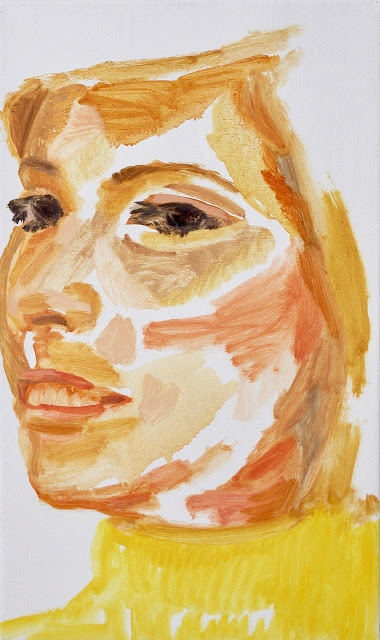Series of 10 oil paintings, 50x30cm, 2020
The portraits are deliberately not finished, the canvas is visible and the face is not complete. A lesbian identity can only be recognised when it is acknowledged, you only see what you know. Especially women who grow up with too little lesbian representation see themselves through the gaze of a cis-male, heterosexual society and environment. This creates voids in the recognition of who they are. These voids are reflected in the white canvas that is visible in the portraits.
These paintings were shown during the event of 'Intersectional Writing' at Kartonnen Dozen, the ever inspiring LGBTQI+ bookshop in Antwerp. While the subject of the paintings is the lesbian identity, it is important to stress that 'lesbian' is as inclusive as possible and the portraits difference in class and ethnicity. The lesbian shown here as portrait nr 7 is a trans woman and painted specifically as someone who did discover a lot about who she is, while in reality the representation for trans people is still to be improved.






























